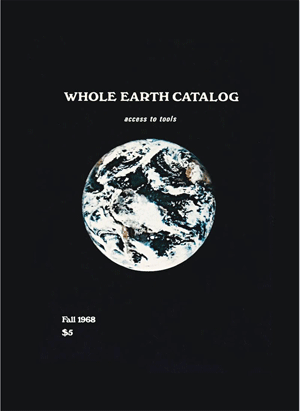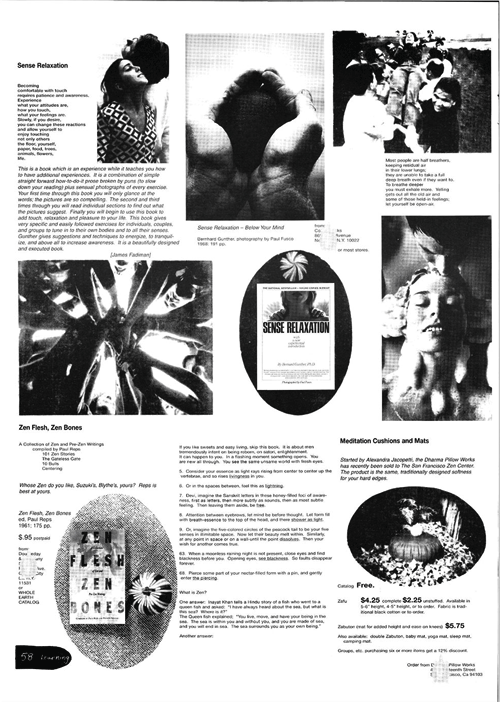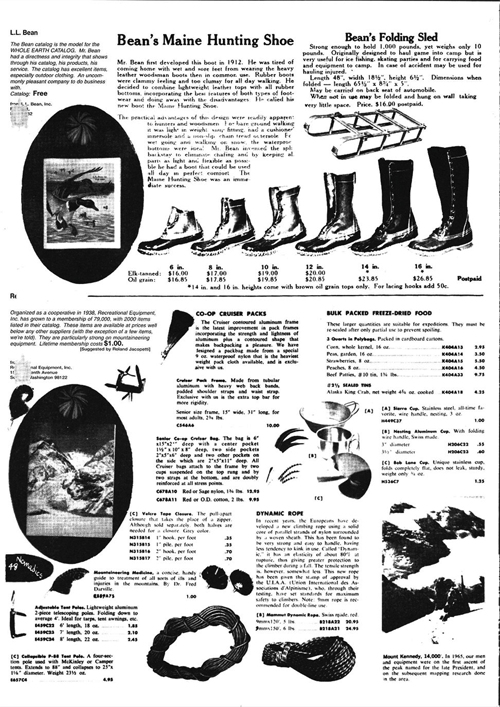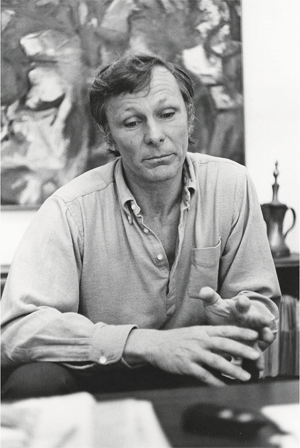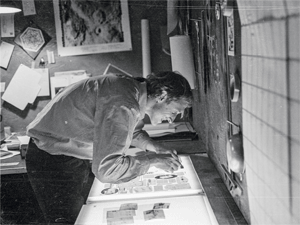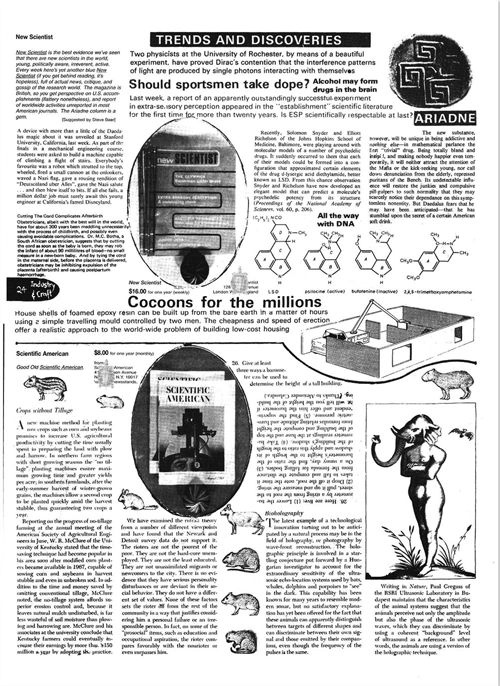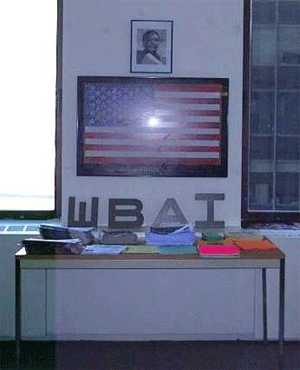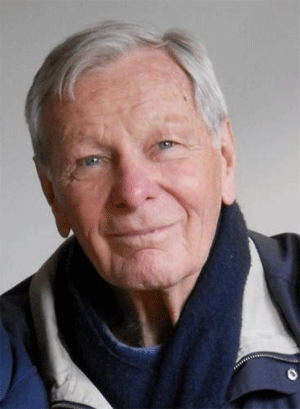Part 2 of 2
The bad relationship between the Milner Group and Lord Birkenhead was not the result of such episodes as this but rather, it would seem, based on a personal antipathy engendered by the character of Lord Birkenhead and especially by his indiscreet and undiplomatic social life and political activity. Nonetheless, Lord Birkenhead was a man of unquestioned vigor and ability and a man of considerable political influence from the day in 1906 when he had won a parliamentary seat for the Conservatives in the face of a great Liberal tidal wave. As a result, he had obtained the post of Secretary of State for India in November 1924 at the same time that Leopold Amery went to the Colonial Office. The episode regarding the Milner candidacy to the Oxford Chancellorship occurred six months later and was practically a direct challenge from Birkenhead to Amery, since at that time the latter was Milner's active political lieutenant and one of the chief movers in the effort to make him Chancellor.
Thus, in the period 1926-1929, the Milner Group held the Viceroy's post but did not hold the post of Secretary of State. The relationship between these two posts was such that good government could not be obtained without close cooperation between them. Such cooperation did not exist in this period. As far as the constitutional development was concerned, this lack of cooperation appeared in a tendency on the part of the Secretary of State to continue to seek a solution of the problem along the road marked by the use of a unilateral British investigatory commission, and a tendency on the part of Irwin (and the Milner Group) to seek a solution along the newer road of cooperative discussion with the Indians. These tendencies did not appear as divergent routes until after the Simon Commission had begun its labors, with the result that accumulating evidence that the latter road would be used left that unilateral commission in an unenviable position.
The Government of India Act of 1919 had provided that an investigation should be made of the functioning of the Act after it had been in effect for ten years. The growing unrest of the Indians and their failure to utilize the opportunities of the Act of 1919 persuaded many Englishmen (including most of the Milner Group) that the promised Statutory Commission should begin its work earlier than anticipated and should direct its efforts rather at finding the basis for a new constitutional system than at examining the obvious failure of the system provided in 1919.
The first official hint that the date of the Statutory Commission would be moved up was given by Birkenhead on 30 March 1927, in combination with some rather "arrogant and patronizing" remarks about Indian politics. The Times, while criticizing Birkenhead for his additional remarks, took up the suggestion regarding the commission and suggested in its turn "that the ideal body would consist of judicially minded men who were able to agree." This is, of course, exactly what was obtained. The authorized biography Viscount Halifax, whence these quotations have been taken, adds at this point: "It is interesting to speculate how far Geoffrey Dawson, the Editor, was again expressing Irwin's thoughts and whether a deliberate ballon d'essai was being put up in favor of Sir John Simon."
The Simon Commission was exactly what The Times had wanted, a body of "judicially minded men who were able to agree." Its chairman was the most expensive lawyer in England, a member of the Cecil Bloc since he was elected to All Souls in 1897, and in addition a member of the two extraordinary clubs already mentioned, Grillion's and The Club. Although he was technically a Liberal, his associations and inclinations were rather on the Conservative side, and it was no surprise in 1931 when he became a National Liberal and occupied one of the most important seats in the Cabinet, the Foreign Office. From this time on, he was closely associated with the policies of the Milner Group and, in view of his personal association with the leaders of the Group in All Souls, may well be regarded as a member of the Group. As chairman of the Statutory Commission, he used his legal talents to the full to draw up a report on which all members of the commission could agree, and it is no small example of his abilities that he was able to get an unanimous agreement on a program which in outline, if not in all its details, was just what the Milner Group wanted.
Of the six other members of the Commission, two were Labourite (Clement Attlee and Vernon Hartshorn). The others were Unionist or Conservative. Viscount Burnham of Eton and Balliol (1884) had been a Unionist supporter of the Cecil Bloc in Commons from 1885 to 1906, and his father had been made baronet and baron by Lord Salisbury. His own title of Viscount came from Lloyd George in 1919.
The fifth member of the Commission, Donald Palmer Howard, Baron Strathcona and Mount Royal, of Eton and Trinity College, Cambridge, had no special claim to fame except that he had been a Unionist M.P. in 1922-1926.
The sixth member, Edward Cecil Cadogan of Eton and Balliol (1904), was the sixth son of Earl Cadogan and thus the older brother of Sir Alexander Cadogan, British delegate to the United Nations. Their father, Earl Cadogan, grandnephew of the first Duke of Wellington, had been Lord Privy Seal in Lord Salisbury's second government and Lord Lieutenant of Ireland in Salisbury's third government. Edward, who was knighted in 1939, had no special claim to fame except that he was a Unionist M.P. from 1922 to 1935 and was Chairman of the House of Commons under the National Government of 1931-1935.
The seventh member, George R. Lane-Fox (Baron Bingley since 1933) of Eton and New College, was a Unionist M.P. from 1906 to 1931 and Secretary of Mines from 1922 to 1928. He is a brother-in-law and lifelong friend of Lord Halifax, having married the Honourable Mary Wood in 1903.
The most extraordinary fact about the Simon Commission was the lack of qualification possessed by its members. Except for the undoubted advantages of education at Eton and Oxford, the members had no obvious claims to membership on any committee considering Indian affairs. Indeed, not one of the eight members had had any previous contact with this subject. Nevertheless, the commission produced an enormous two-volume report which stands as a monumental source book for the study of Indian problems in this period. When, to the lack of qualifications of its members, we add the fact that the commission was almost completely boycotted by Indians and obtained its chief contact with the natives by listening to their monotonous chants of "Simon, go back," it seems more than a miracle that such a valuable report could have emerged from their investigations. The explanation is to be found in the fact that they received full cooperation from the staff of the Government of India, including members of the Milner Group.
It is clear that by the end of 1928 the Milner Group, as a result of the strong Indian opposition to the Simon Commission, the internal struggle within that commission between Simon and Burnham (because of the latter's refusal to go as far as the former desired in the direction of concessions to the Indians), and their inability to obtain cooperation from the Secretary of State (as revealed in the steady criticism of Birkenhead in The Times), had decided to abandon the commission method of procedure in favor of a round-table method of procedure. It is not surprising that the Round Table Groups should prefer a roundtable method of procedure even in regard to Indian affairs, where many of the participants would have relatively little experience in the typical British procedure of agreement through conference. To the Milner Group, the round-table method was not only preferable in itself but was made absolutely necessary by the widespread Indian criticism of the Simon Commission for its exclusively British personnel. This restriction had been adopted originally on the grounds that only a purely British and purely parliamentary commission could commit Parliament in some degree to acceptance of the recommendations of the commission — at least, this was the defense of the restricted membership made to the Indians by the Viceroy on 8 November 1927. In place of this argument, the Milner Group now advanced a somewhat more typical idea, namely, that only Indian participation on a direct and equal basis could commit Indians to any plans for the future of India. By customary Milner Group reasoning, they decided that the responsibility placed on Indians by making them participate in the formulation of plans would moderate the extremism of their demands and bind them to participate in the execution of these plans after they were enacted into law. This basic idea — that if you have faith in people, they will prove worthy of that faith, or, expressed in somewhat more concrete terms, that if you give dissatisfied people voluntarily more than they expect and, above all, before they really expect to get it, they will not abuse the gift but will be sobered simultaneously by the weight of responsibility and the sweetness of gratitude — was an underlying assumption of the Milner Group's activities from 1901 to the present. Its validity was defended (when proof was demanded) by a historical example — that is, by contrasting the lack of generosity in Britain's treatment of the American Colonies in 1774 with the generosity in her treatment of the Canadian Colonies in 1839. The contrast between the "Intolerable Acts" and the Durham Report was one of the basic ideas at the back of the minds of all the important members of the Milner Group. In many of those minds, however, this assumption was not based on political history at all but had a more profound and largely unconscious basis in the teachings of Christ and the Sermon on the Mount. This was especially true of Lionel Curtis, John Dove, Lord Lothian, and Lord Halifax. Unless this idea is recognized, it is not possible to see the underlying unity behind the actions of the Group toward the Boers in 1901-1910, toward India in 1919 and 1935, and toward Hitler in 1934-1939.
These ideas as a justification of concessions to India are to be found in Milner Group discussions of the Indian problem at all periods, especially just before the Act of 1919. A decade later they were still exerting their influence. They will be found, for example, in The Round Table articles on India in September 1930 and March 1931. The earlier advocated the use of the round-table method but warned that it must be based on complete equality for the Indian members. It continued: "Indians should share equally with Great Britain the responsibility for reaching or failing to reach an agreement as to what the next step in Indian constitutional development should be. It is no longer a question, as we see it, of Great Britain listening to Indian representatives and then deciding for herself what the next Indian constitution should be.... The core of the round table idea is that representative Britons and representative Indians should endeavour to reach an agreement, on the understanding that if they can reach an agreement, each will loyally carry it through to completion, as was the case with Ireland in 1922." As seen by the Milner Group, Britain's responsibility was
"her obligation to help Indians to take maximum responsibility for India's government on their own shoulders, and to insist on their doing so, not only because it is the right thing in itself, but because it is the most certain antidote to the real danger of anarchy which threatens India unless Indians do learn to carry responsibility for government at a very early date There is less risk in going too fast in agreement and cooperation with political India than in going at a more moderate pace without its agreement and cooperation. Indeed, in our view, the most successful foundation for the Round Table Conference would be that Great Britain should ask the Indian delegates to table agreed proposals and then do her utmost to accept them and place on Indian shoulders the responsibility for carrying them into effect."
It is very doubtful if the Milner Group could have substituted the round-table method for the commission method in quite so abrupt a fashion as it did, had not a Labour government come to office early in 1929. As a result, the difficult Lord Birkenhead was replaced as Secretary of State by the much more cooperative Mr. Wedgewood Benn (Viscount Stansgate since 1941). The greater degree of cooperation which the Milner Group received from Benn than from Birkenhead may be explained by the fact that their hopes for India were not far distant from those held in certain circles of the Labour Party. It may also be explained by the fact that Wedgewood Benn was considerably closer, in a social sense, to the Milner Group than was Birkenhead. Benn had been a Liberal M.P. from 1906 to 1927; his brother Sir Ernest Benn, the publisher, had been close to the Milner Group in the Ministry of Munitions in 1916-1917 and in the Ministry of Reconstruction in 1917-1918; and his nephew John, oldest son of Sir Ernest, married the oldest daughter of Maurice Hankey in 1929. Whatever the cause, or combination of causes, Lord Irwin's suggestion that the round-table method be adopted was accepted by the Labour government. The suggestion was made when the Viceroy returned to London in June 1929, months before the Simon Report was drafted and a year before it was published. With this suggestion Lord Irwin combined another, that the government formally announce that its goal for India was "Dominion status." The plan leaked out, probably because the Labour government had to consult with the Liberal Party, on which its majority depended. The Liberals (Lord Reading and Lloyd George) advised against the announcement, but Irwin was instructed to make it on his return to India in October. Lord Birkenhead heard of the plan and wrote a vigorous letter of protest to The Times. When Geoffrey Dawson refused to publish it, it appeared in the Daily Telegraph, thus repeating the experience of Lord Lansdowne's even more famous letter of 1917.
Lord Irwin's announcement of the Round Table Conference and of the goal of Dominion status, made in India on 31 October 1929, brought a storm of protest in England. It was rejected by Lord Reading and Lloyd George for the Liberals and by Lord Birkenhead and Stanley Baldwin for the Conservatives. It is highly unlikely that the Milner Group were much disturbed by this storm. The reason is that the members of the Croup had already decided that "Dominion status" had two meanings — one meaning for Englishmen, and a second, rather different, meaning for Indians. As Lord Irwin wrote in a private memorandum in November 1929:
"To the English conception, Dominion Status now connotes, as indeed the word itself implies, an achieved constitutional position of complete freedom and immunity from interference by His Majesty's Government in London.... The Indian seems generally to mean something different. . . . The underlying element in much of Indian political thought seems to have been the desire that, by free conference between Great Britain and India, a constitution should be fashioned which may contain within itself the seed of full Dominion Status, growing naturally to its full development in accordance with the particular circumstances of India, without the necessity — the implications of which the Indian mind resents — of further periodic enquiries by way of Commission. What is to the Englishman an accomplished process is to the Indian rather a declaration of right, from which future and complete enjoyment of Dominion privilege will spring." (3)
This distinction, without any reference to Lord Irwin (whose memorandum was not published until 1941), was also made in the September 1930 issue of The Round Table. On this basis, for the sake of appeasement of India, the Milner Group was willing to promise India "Dominion status" in the Indian meaning of the expression and allow the English who misunderstood to cool off gradually as they saw that the development was not the one they had feared. Indeed, to the Milner Group, it probably appeared that the greater the rage in Britain, the greater the appeasement in India.
Accordingly, the first session of the Round Table Conference was called for November 1930. It marked an innovation not only because of the status of equality and responsibility which it placed on the Indians, but also because, for the first time, it tried to settle the problem of the Indian States within the same framework as it settled the constitutional problem of British India. This was a revolutionary effort, and its degree of success was very largely due to the preparatory work of Lord Irwin, acting on the advice of Malcolm Hailey.
The Indian States had remained as backward, feudalistic, and absolutist enclaves, within the territorial extent of British India and bound to the British Raj by individual treaties and agreements. As might be expected from the Milner Group, the solution which they proposed was federation. They hoped that devolution in British India would secure a degree of provincial autonomy that would make it possible to bind the provinces and the Indian States within the same federal structure and with similar local autonomy. However, the Group knew that the Indian States could not easily be federated with British India until their systems of government were raised to some approximation of the same level. For this reason, and to win the Princes over to federation, Lord Irwin had a large number of personal consultations with the Princes in 1927 and 1928. At some of these he lectured the Princes on the principles of good government in a fashion which came straight from the basic ideology of the Milner Group. The memorandum which he presented to them, dated 14 June 1927 and published in Johnson's biography, Viscount Halifax, could have been written by the Kindergarten. This can be seen in its definitions of the function of government, its emphasis on the reign of law, its advocacy of devolution, its homily on the duty of princes, its separation of responsibility in government from democracy in government, and its treatment of democracy as an accidental rather than an essential characteristic of good government.
The value of this preparatory work appeared at the first Round Table Conference, where, contrary to all expectations, the Indian Princes accepted federation. The optimism resulting from this agreement was, to a considerable degree, dissipated, however, by the refusal of Gandhi's party to participate in the conference unless India were granted full and immediate Dominion status. Refusal of these terms resulted in an outburst of political activity which made it necessary for Irwin to find jails capable of holding sixty thousand Indian agitators at one time.
The view that the Round Table Conference represented a complete repudiation of the Simon Commission's approach to the Indian problem was assiduously propagated by the Milner Group in order to prevent Indian animosity against the latter from being carried over against the former. But the differences were in detail, since in main outline both reflected the Group's faith in federation, devolution, responsibility, and minority rights. The chief recommendations of the Simon Commission were three in number: (1) to create a federation of British India and the Indian States by using the provinces of the former as federative units with the latter; (2) to modify the central government by making the Legislative Assembly a federal organization but otherwise leave the center unchanged; (3) to end dyarchy in the provinces by making Indians responsible for all provincial activities. It also advocated separation of Burma from India.
These were also the chief conclusions of the various Round Table Conferences and of the government's White Papers of December 1931 (Cmd. 3972) and of March 1933 (Cmd. 4268). The former was presented to Parliament and resulted in a debate and vote of confidence on the government's policy in India as stated in it. The attack was led by Winston Churchill in the Commons and by Lords Lloyd, Salisbury, Midleton, and Sumner in the House of Lords. None of these except Churchill openly attacked the government's policy, the others contenting themselves with advising delay in its execution. The government was defended by Samuel Hoare, John Simon, and Stanley Baldwin in the Commons and by Lords Lothian, Irwin, Zetland, Dufferin, and Hailsham, as well as Archbishop Lang, in the Lords. Lord Lothian, in opening the debate, said that while visiting in India in 1912 he had written an article for an English review saying that the Indian Nationalist movement "was essentially healthy, for it was a movement for political virtue and self-respect," although the Indian Civil Servant with whom he was staying said that Indian Nationalism was sedition. Lord Lothian implied that he had not changed his opinion twenty years later. In the Lower House the question came to a vote, which the government easily carried by 369 to 43. In the majority were Leopold Amery, John J. Astor, John Buchan, Austen Chamberlain, Viscount Cranborne, Samuel Hoare, W. G. A. Ormsby-Gore, Lord Eustace Percy, John Simon, and D. B. Somervell. In the minority were Churchill, George Balfour, and Viscount Wolmer.
Practically the same persons appeared on the same sides in the discussion regarding the White Paper of 1933. This document, which embodied the government's suggestions for a bill on Indian constitutional reform, was defended by various members of the Milner Group outside of Parliament, and anonymously in The Round Table. John Buchan wrote a preface to John Thompson's India: The White Paper (1933), in which he defended the extension of responsible government to India, saying, "We cannot exclude her from sharing in what we ourselves regard as the best." Samuel Hoare defended it in a letter to his constituents at Chelsea. Malcolm Hailey defended it before the Royal Empire Society Summer School at Oxford, in a speech afterwards published in The Asiatic Review. Hailey had resigned as Governor of the United Provinces in India in order to return to England to help the government put through its bill. During the long period required to accomplish this, Samuel Hoare, who as Secretary of State for India was the official government spokesman on the subject, had Hailey constantly with him as his chief adviser and support. It was this support that permitted Hoare, whose knowledge of India was definitely limited, to conduct his astounding campaign for the Act of 1935.
The White Paper of 1933 was presented to a Joint Select Committee of both Houses. It was publicly stated as a natural action on the part of the government that this committee be packed with supporters of the bill. For this reason Churchill, George Balfour, and Lord Wolmer refused to serve on it, although Josiah Wedgwood, a Labour Member who opposed the bill, asked to be put on the committee because it was packed.
The Joint Select Committee, as we have seen, had thirty-two members, of whom at least twelve were from the Cecil Bloc and Milner Group and supported the bill. Four were from the inner circles of the Milner Group. The chief witnesses were Sir Samuel Hoare; who gave testimony for twenty days; Sir Michael O'Dwyer, who gave testimony for four days; and Winston Churchill, who gave testimony for three days. The chief witness was thus Hoare, who answered 5594 questions from the committee. At all times Hoare had Malcolm Hailey at his side for advice. The fashion in which the government conducted the Joint Select Committee aroused a good deal of unfavorable comment. Lord Rankeillour in the House of Lords criticized this, especially the fashion in which Hoare used his position to push his point of view and to influence the evidence which the committee received from other witnesses. He concluded: "This Committee was not a judicial body, and its conclusions are vitiated thereby. You may say that on their merits they have produced a good or a bad Report, but what you cannot say is that the Report is the judicial finding of unbiased or impartial minds." As a result of such complaints, the House of Commons Committee on Privilege investigated the conduct of the Joint Select Committee. It found that Hoare's actions toward witnesses and in regard to documentary evidence could be brought within the scope of the Standing Orders of the House if a distinction were made between judicial committees and non-judicial committees and between witnesses giving facts and giving opinions. These distinctions made it possible to acquit Sir Samuel of any violation of privilege, but aroused such criticism that a Select Committee on Witnesses was formed to examine the rules for dealing with witnesses. In its report, on 4 June 1935, this Select Committee rejected the validity of the distinctions between judicial and non-judicial and between fact and opinion made by the Committee on Privilege, and recommended that the Standing Rules be amended to forbid any tampering with documents that had been received by a committee. The final result was a formal acquittal, but a moral condemnation, of Hoare's actions in regard to the Joint Select Committee on the Government of India.
The report of the Joint Select Committee was accepted by nineteen out of its thirty- two members. Nine voted against it (five Conservative and four Labour Members). A motion to accept the report and ask the government to proceed to draw up a bill based on it was introduced in the House of Lords by the President of the Board of Education, Lord Halifax (Lord Irwin), on 12 December 1934, in a typical Milner Group speech. He said: "As I read it, the whole of our British and Imperial experience shouts at us the warning that representative government without responsibility, once political consciousness has been aroused, is apt to be a source of great weakness and, not impossibly, great danger. We had not learned that lesson, let me remind the House, in the eighteenth century, and we paid very dearly for it. We learned it some sixty years later and, by having learned it, we transformed the face and history of Canada." Lord Salisbury once again advised delay, and attacked the idea that parliamentary government could work in India or indeed had worked anywhere outside the British Commonwealth. Lord Snell, speaking for the Labour opposition, objected to the lack of protection against economic exploitation for the Indian masses, the omission of any promise of Dominion status for India, the weighing of the franchise too heavily on the side of the landlords and too lightly on the side of women or of laborers, the provisions for a second chamber, and the use of indirect election for the first chamber. Lord Lothian answered both speakers, supporting only one criticism, that against indirect election to the central assembly. He made the significant statement that he did not fear to turn India over to the Congress Party of Gandhi because (1) "though I disagree with almost everything that they say in public and most of their political programme, I have a sneaking sympathy with the emotion which lies underneath them . . . the aspiration of young impetuous India anxious to take responsibility on its own shoulders"; and (2) "because I believe that the one political lesson, which has more often been realized in the British Commonwealth of Nations than anywhere else in the world, is that the one corrective of political extremism is to put responsibility upon the extremists, and, by these proposals, that is exactly what we are doing." These are typical Milner Group reasons.
In the debate, Halifax was supported by Archbishop Lang and Lords Zetland, Linlithgow, Midleton, Hardinge of Penshurst, Lytton, and Reading. Lord Salisbury was supported by Lords Phillimore, Rankeillour, Ampthill, and Lloyd. In the division, Salisbury's motion for delay was beaten by 239 to 62. In addition to the lords mentioned, the majority included Lords Dufferin, Linlithgow, Cranbrook, Cobham, Cecil of Chelwood, Goschen, Hampden, Elton, Lugard, Meston, and Wemyss, while the minority included Lords Birkenhead, Westminster, Carnock, Islington, and Leconfield. It is clear that the Milner Group voted completely with the majority, while the Cecil Bloc was split.
The bill was introduced in the House of Commons on 6 February 1935 by Sir Samuel Hoare. As was to be expected, his argument was based on the lessons to be derived from the error of 1774 and the success of 1839 in North America. The government's actions, he declared, were based on "plain, good intentions." He was mildly criticized from the left by Attlee and Sir Herbert Samuel; supported by Sir Arthur Steel-Maitland, Sir Edward Grigg, and others; and then subjected to a long-sustained barrage from Winston Churchill. Churchill had already revealed his opinion of the bill over the BBC when he said, on 29 January 1935, that it was "a monstrous monument of sham built by the pygmies." He continued his attack in a similar vein, with the result that almost every government speaker felt the need to caution him that his intemperance was hurting his own cause. From our point of view, his most interesting statement, and one which was not contradicted, said: "I have watched this story from its very unfolding, and what has struck me more than anything else about it has been the amazingly small number of people who have managed to carry matters to their present lamentable pitch. You could almost count them on the fingers of one hand. I have also been struck by the prodigious power which this group of individuals have been able to exert and relay, to use a mechanical term, through the vast machinery of party, of Parliament, and of patronage, both here and in the East. It is tragical that they should have been able to mislead the loyalties and use the assets of the Empire to its own undoing. I compliment them on their skill, and I compliment them also on their disciples. Their chorus is exceedingly well drilled." This statement was answered by Lord Eustace Percy, who quoted Lord Hugh Cecil on "profitable mendacity." This led to an argument, in which both sides appealed to the Speaker. Order was restored when Lord Eustace said of Churchill, "I would never impute to him . . . any intention of making a charge which he did not believe himself."
It is quite clear that Churchill believed his charge and was referring to what we have called the Milner Group, although he would not have known it under that name, nor would he have realized its extreme ramifications. He was merely referring to the extensive influence of that close group of associates which included Hoare, Hailey, Curtis, Lothian, Dawson, Amery, Grigg, and Halifax.
After four days of debate on the second reading, the opposition amendment was rejected by 404-133, and the bill passed to the committee stage. In the majority were Amery, Buchan, Grigg, Hoare, Ormsby-Gore, Simon, Sir Donald Somervell, and Steel- Maitland. The minority consisted of three ill-assorted groups: the followers of Churchill, the leaders of the Labour Party, and a fragment of the Cecil Bloc with a few others.
The Government of India Act of 1935 was the longest bill ever submitted to Parliament, and it underwent the longest debate in history (over forty days in Commons). In general, the government let the opposition talk itself out and then crushed it on each division. In the third reading, Churchill made his final speech in a tone of baneful warning regarding the future of India. He criticized the methods of pressure used by Hoare and said that in ten years' time the Secretary of State would be haunted by what had been done, and it could be said of him,
"God save thee, ancient Mariner,
From the fiends that plague thee thus.
Why look'st thou so?' With my cross-bow,
I shot the Albatross."
These somber warnings were answered by Leopold Amery, who opened his rejoinder with the words, "Here endeth the last chapter of the Book of the Prophet Jeremiah."
In the House of Lords the bill was taken through its various stages by Lord Zetland (who replaced Hoare as Secretary of State for India in June 1935), and the final speech for the government was from Halifax (recently made Secretary of State for War). The Act received the Royal Assent on 1 August 1935.
The Act never went into effect completely, and by 1939 the Milner Group was considering abandoning it in favor of complete self-government for India. The portions of the Act of 1935 dealing with the central government fell to the ground when the refusal of the Princes of the Indian States to accept the Act made a federal solution impossible. The provincial portion began to function in 1937, but with great difficulty because of the extremist agitation from the Congress Party. This party obtained almost half of the seats in the eleven provinces and had a clear majority in six provinces. The provincial governments, started in 1937, worked fairly well, and the emergency powers of the central governments, which continued on the 1919 model, were used only twice in over two years. When the war began, the Congress Party ordered its ministries to resign. Since the Congress Party members in the legislatures would not support non-Congress ministries, the decree powers of the Provincial Governors had to be used in those provinces with a Congress majority. In 1945 six out of the eleven provinces had responsible government.
From 1939 on, constitutional progress in India was blocked by a double stalemate: (1) the refusal of the Congress Party to cooperate in government unless the British abandoned India completely, something which could not be done while the Japanese were invading Burma; and (2) the growing refusal of the Moslem League to cooperate with the Congress Party on any basis except partition of India and complete autonomy for the areas with Moslem majorities. The Milner Group, and the British government generally, by 1940 had given up all hope of any successful settlement except complete self-government for India, but it could not give up to untried hands complete control of defense policy during the war. At the same time, the Milner Group generally supported Moslem demands because of its usual emphasis on minority rights.
During this period the Milner Group remained predominant in Indian affairs, although the Viceroy (Lord Linlithgow) was not a member of the Group. The Secretary of State for India, however, was Leopold Amery for the whole period 1940-1945. A number of efforts were made to reach agreement with the Congress Party, but the completely unrealistic attitude of the party's leaders, especially Gandhi, made this impossible. In 1941, H. V. Hodson, by that time one of the most important members of the Milner Group, was made Reforms Commissioner for India. The following year the most important effort to break the Indian stalemate was made. This was the Cripps Mission, whose chief adviser was Sir Reginald Coupland, another member of the inner circle of the Milner Group. As a result of the failure of this mission and of the refusal of the Indians to believe in the sincerity of the British (a skepticism that was completely without basis), the situation dragged on until after the War. The election of 1945, which drove the Conservative Party from office, also removed the Milner Group from its positions of influence. The subsequent events, including complete freedom for India and the division of the country into two Dominions within the British Commonwealth, were controlled by new hands, but the previous actions of the Milner Group had so committed the situation that these new hands had no possibility (nor, indeed, desire) to turn the Indian problem into new paths. There can be little doubt that with the Milner Group still in control the events of 1945-1948 in respect to India would have differed only in details.
The history of British relations with India in the twentieth century was disastrous. In this history the Milner Group played a major role. To be sure, the materials with which they had to work were intractable and they had inconvenient obstacles at home (like the diehards within the Conservative Party), but these problems were made worse by the misconceptions about India and about human beings held by the Milner Group. The bases on which they built their policy were fine — indeed, too fine. These bases were idealistic, almost Utopian, to a degree which made it impossible for them to grow and function and made it highly likely that forces of ignorance and barbarism would be released, with results exactly contrary to the desires of the Milner Group. On the basis of love of liberty, human rights, minority guarantees, and self- responsibility, the Milner Group took actions that broke down the lines of external authority in Indian society faster than any lines of internal self-discipline were being created. It is said that the road to perdition is paved with good intentions. The road to the Indian tragedy of 1947-1948 was also paved with good intentions, and those paving blocks were manufactured and laid down by the Milner Group. The same good intentions contributed largely to the dissolution of the British Empire, the race wars of South Africa, and the unleashing of the horrors of 1939-1945 on the world.
To be sure, in India as elsewhere, the Milner Group ran into bad luck for which they were not responsible. The chief case of this in India was the Amritsar Massacre of 1919, which was probably the chief reason for Gandhi's refusal to cooperate in carrying out the constitutional reforms of that same year. But the Milner Group's policies were self-inconsistent and were unrealistic. For example, they continually insisted that the parliamentary system was not fitted to Indian conditions, yet they made no real effort to find a more adaptive political system, and every time they gave India a further dose of self-government, it was always another dose of the parliamentary system. But, clinging to their beliefs, they loaded down this system with special devices which hampered it from functioning as a parliamentary system should. The irony of this whole procedure rests in the fact that the minority of agitators in India who wanted self- government wanted it on the parliamentary pattern and regarded every special device and every statement from Britain that it was not adapted to Indian conditions as an indication of the insincerity in the British desire to grant self-government to India.
A second error arises from the Milner Group's lack of enthusiasm for democracy. Democracy, as a form of government, involves two parts: (1) majority rule and (2) minority rights. Because of the Group's lack of faith in democracy, they held no brief for the first of these but devoted all their efforts toward achieving the second. The result was to make the minority uncompromising, at the same time that they diminished the majority's faith in their own sincerity. In India the result was to make the Moslem League almost completely obstructionist and make the Congress Party almost completely suspicious. The whole policy encouraged extremists and discouraged moderates. This appears at its worst in the systems of communal representation and communal electorates established in India by Britain. The Milner Group knew these were bad, but felt that they were a practical necessity in order to preserve minority rights. In this they were not only wrong, as proved by history, but were sacrificing principle to expediency in a way that can never be permitted by a group whose actions claim to be so largely dictated by principle. To do this weakens the faith of others in the group's principles.
The Group made another error in their constant tendency to accept the outcry of a small minority of Europeanized agitators as the voice of India. The masses of the Indian people were probably in favor of British rule, for very practical reasons. The British gave these masses good government through the Indian Civil Service and other services, but they made little effort to reach them on any human, intellectual, or ideological level. The "color line" was drawn — not between British and Indians but between British and the masses, for the educated upperclass Indians were treated as equals in the majority of cases. The existence of the color line did not bother the masses of the people, but when it hit one of the educated minority, he forgot the more numerous group of cases where it had not been applied to him, became anti-British and began to flood the uneducated masses with a deluge of anti-British propaganda. This could have been avoided to a great extent by training the British Civil Servants to practice racial toleration toward all classes, by increasing the proportion of financial expenditure on elementary education while reducing that on higher education, by using the increased literacy of the masses of the people to impress on them the good they derived from British rule and to remove those grosser superstitions and social customs which justified the color line to so many English. All of these except the last were in accordance with Milner Group ideas. The members of the Group objected to the personal intolerance of the British in India, and regretted the disproportionate share of educational expenditure which went to higher education (see the speech in Parliament of Ormsby-Gore, 11 December 1934), but they continued to educate a small minority, most of whom became anti-British agitators, and left the masses of the people exposed to the agitations of that minority. On principle, the Group would not interfere with the superstitions and grosser social customs of the masses of the people, on the grounds that to do so would be to interfere with religious freedom. Yet Britain had abolished suttee, child marriage, and thuggery, which were also religious in foundation. If the British could have reduced cow-worship, and especially the number of cows, to moderate proportions, they would have conferred on India a blessing greater than the abolition of suttee, child marriage, and thuggery together, would have removed the chief source of animosity between Hindu and Moslem, and would have raised the standard of living of the Indian people to a degree that would have more than paid for a system of elementary education.
If all of these things had been done, the agitation for independence could have been delayed long enough to build up an electorate capable of working a parliamentary system. Then the parliamentary system, which educated Indians wanted, could have been extended to them without the undemocratic devices and animadversions against it which usually accompanied any effort to introduce it on the part of the British.

